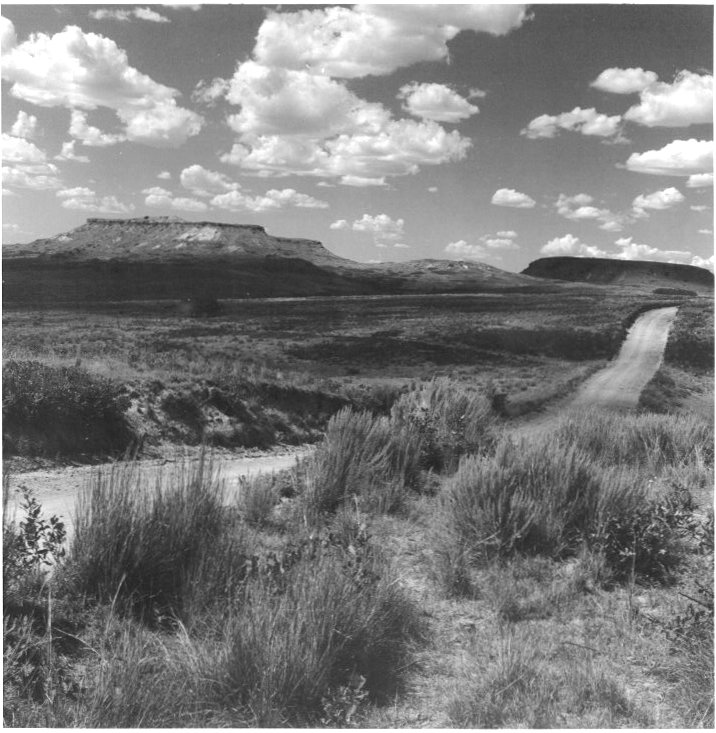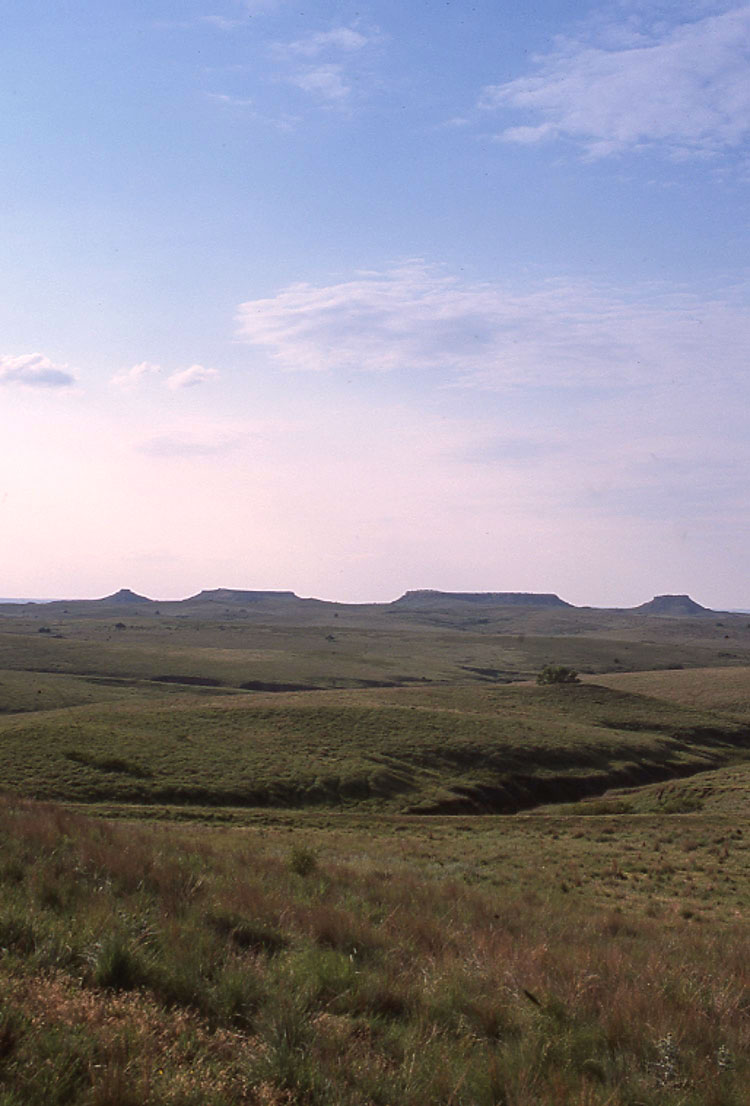ANTELOPE HILLS.
Reaching an elevation of 2,600 feet above sea level, the Antelope Hills are located near the Texas border in western Oklahoma in northwest Roger Mills County. This area once marked the international line between the United States and Mexico. Relatively low annual precipitation and warm temperatures characterize the climate in this windy, subhumid High Plains region. Geologically the Antelope Hills sit atop the Ogallala Aquifer formation and the petroleum-rich Anadarko Basin, which underlies the area to five thousand feet. The surface was formed from sedimentary sand, clay, gravel, and caliche deposited from ancient Rocky Mountains streams. From this sediment, loamy/sandy soils formed in the rolling hills. Native plants consist mostly of short prairie grasses and a few broadleaf species, with sparsely wooded areas dominated by cottonwoods, willows, and mesquite trees, as well as some eastern red cedar. Wildlife in the area consists of mule deer, whitetail deer, pronghorn antelope, and small mammals such as cottontail and jackrabbit. Upland fowl such as bobwhite quail, Rio Grande turkey, and ring-necked pheasant are present as well as successful reptilian communities.
Humans did not heavily use the area in late prehistoric times although some evidence of hunting societies has been discovered in nearby prehistoric campsites. The Spanish explorer Francisco Vásquez de Coronado mentioned the Antelope Hills as a campsite in 1541. The land was claimed for Spain by René Robert Cavelier, Sieur de La Salle in 1682, was granted to France in 1800, and became United States territory through the Louisiana Purchase in 1803. Trails to California gold fields crossed through the area in the mid-1800s. From 1867 the area was included in the Cheyenne and Arapaho reservation until allotment and the land run of 1892 when it became part of Oklahoma Territory's County F. At the beginning of the twenty-first century agriculture and petroleum exploration and production were the most prevalent economic activities.
Bibliography
Soil Survey of Roger Mills County (Washington, D.C.: U.S. Department of Agriculture, 1959).
Kenneth S. Johnson et al., Geology and Earth Resources of Oklahoma: An Atlas of Maps and Cross Sections (Norman: Oklahoma Geological Survey, 1972).
J. Peter Thurmond and A. E. Picarella, "County Information for Roger Mills County," Bulletin of the Oklahoma Anthropological Society 47 (1998).
Citation
The following (as per The Chicago Manual of Style, 17th edition) is the preferred citation for articles:
J. Josh Pittman and Richard A. Marston, “Antelope Hills,” The Encyclopedia of Oklahoma History and Culture, https://www.okhistory.org/publications/enc/entry?entry=AN007.
Published January 15, 2010
© Oklahoma Historical Society



